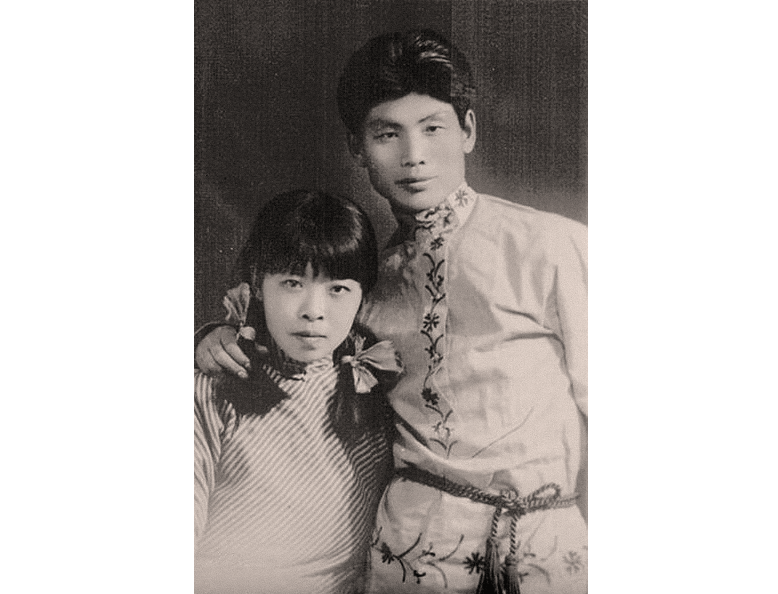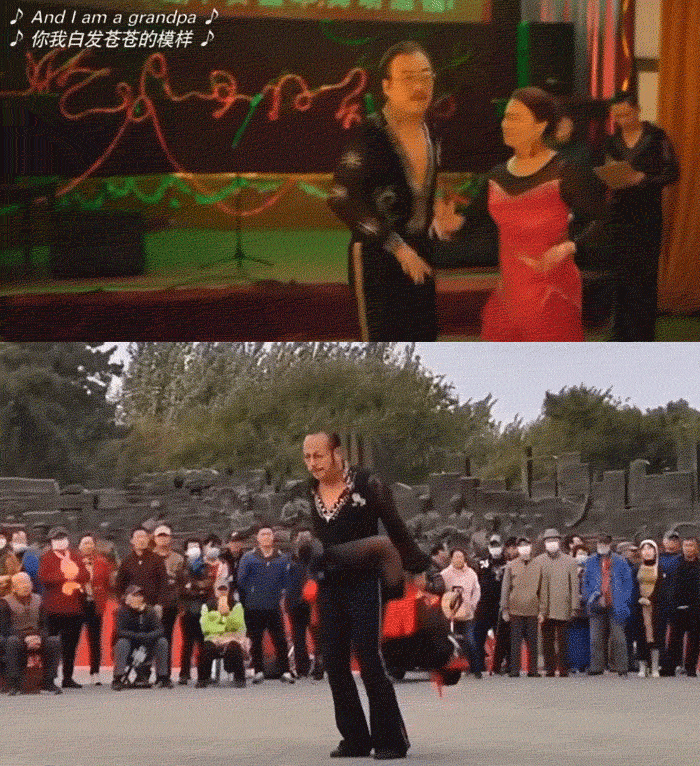
As China’s Economy Wobbles, Its Rust Belt Is Having a Moment
This is the first piece in a series on the “Dongbei Renaissance.” The second can be read here.
Ever since the northeast China-set drama “The Long Season” became one of the biggest TV shows of 2023, critics and audiences have once again found themselves debating whether China is in the midst of a “Dongbei Renaissance.”
The Dongbei Renaissance, which uses the Chinese term for the country’s three northeastern provinces of Heilongjiang, Liaoning, and Jilin, was coined by Gem, the Dongbei-born rapper behind the intentionally cheesy, nostalgia-inspired hit “Yelang Disco” in 2019. It’s not just about music, however. Long dismissed as a cultural backwater and rust belt, Dongbei is having a pop culture moment. Its comedians, including Li Xueqin and Wang Jianguo, are some of the country’s most recognizable stand-up stars, while authors like Shuang Xuetao, Ban Yu, and Zheng Zhi; musicians like Second Hand Rose, Mao Buyi, and Gem; and shows like “The Long Season” have all turned the region’s crumbling smokestacks, abandoned dance halls, and lonely ice rinks into alt-cool symbols.
This isn’t the first time Dongbei has been at the forefront of Chinese cultural life. In the 1930s, when China’s northeast was under Japanese colonial rule, young writers such as Duanmu Hongliang, Xiao Jun, and Xiao Hong fled to other parts of China, where they produced harrowing descriptions of how the Chinese in their beloved hometowns were suffering at the hands of Japanese settlers. Meanwhile, the Japanese-controlled Manchukuo Motion Picture Association, although best remembered today for whitewashing the region’s colonial regime, produced films that were nevertheless widely screened in Japanese-controlled Asia. (After liberation, it would form the basis of the influential Changchun Film Studio.)

If that cultural boom took place against a backdrop of colonialism and was defined by works expressing the homesickness of its exiled families, the Dongbei Renaissance gives voice to a different kind of longing — that of former state-owned enterprise employees who were laid off in droves at the end of the last century.
Over the first few decades of the People’s Republic, Dongbei was China’s industrial and technological hub, accounting for as much as three-quarters of the nation’s heavy industry. By the 1970s, it boasted the country’s longest road and rail transportation network and its highest rate of urbanization. If not necessarily the cultural hotspot it was in the 1930s, it was nevertheless China’s most modern, affluent, and populous region.
Beginning in the 1990s, however, China undertook a drastic shake-up of its industry. From 1998 to 2001, millions of workers were laid off each year in Dongbei. In Shenyang, the capital of Liaoning province, more than one million state-owned enterprise employees lost their jobs. Factories shuttered overnight, their furnaces flickering out, and their workers made redundant. Nowhere in China did workers adhere more closely to collectivist values. And nowhere in China were they hurt more when those values became outmoded.
This is the story told by “The Long Season.” Set in the 1990s, in a fictional city modeled after the region’s Soviet-inspired single-industry towns, it focuses on a community devastated by the closure of the city’s steel factory.
That factory sat at the center of a cradle-to-the-grave safety net, maintaining a vast network of hospitals, schools, bathhouses, clubs, and residential compounds for its employees and their families. After China’s post-Mao market reforms and their associated social transformations, the factory faced increased competition from the private sector, even as it was bled dry by corrupt managers and bureaucrats, until the entire city teetered on the edge of economic collapse.
One of the calling cards of the Dongbei Renaissance is a fixation on this period — and on getting the details of life during that time of transition just right. Produced by a largely northeastern cast and crew, the plotlines of “The Long Season” feel authentic. Its setting, although fictional, is patterned on real-life single-industry cities like Anshan and Panjin in Liaoning, or Daqing in Heilongjiang.
The attention to detail can also be seen in the characters: Li Qiaoyun, whose husband regularly takes her on the back seat of his bicycle to drink with him in nightclubs, is a true-to-life representation of laid-off female workers at that time. (A similar character appears in the 2017 French-Belgian-Canadian-Chinese film “Bitter Flowers,” which also centers on Dongbei.) And the street ruffian Fu Weijun is reminiscent of several real people depicted in Wang Bing’s Shenyang-set documentary “Tie Xi Qu: West of the Tracks.” Even the comedic scene in which retired police officer Ma Desheng performs an exaggerated Latin dance has roots in the real world: His outfit and movements are both clearly a reference to the “Dancing King” of Shenyang’s Workers’ Park.

Many of the most prolific Dongbei-born authors, screenwriters, and directors lived through the layoffs of the 1990s, including the three highly acclaimed writers Shuang Xuetao, Ban Yu, and Zheng Zhi, who were all born and raised in Shenyang’s Tiexi District. In their youth, they witnessed the older generation’s desperation in the face of unemployment. Their childhood memories are marked by random killings, taxi jackings, brothels masquerading as dance halls, and parents who died by suicide because they couldn’t offer their children a decent upbringing. Upon reaching adulthood, they used art to give a voice to their elders’ pent-up sorrow and cast a light on this neglected corner of history.
It would be incorrect, however, to say that works associated with the Dongbei Renaissance wallow in misery. Although they typically revolve around ordinary people who find themselves destitute and desperate, they are also characterized by a strong streak of self-deprecating humor and scenes of tremendous resilience. For example, Liao Fan’s out-of-left-field dance solo in the otherwise bleak thriller “Black Coal, Thin Ice,” the team of detectives blowing off steam at a KTV in “The Long Season,” and a recently bereaved group of friends performing a Latin dance in front of the piano they made in “Piano in a Factory” all show how ordinary people maintained their dignity and optimism in the face of dire circumstances.
This emphasis on dignity is also linked to Dongbei’s unique history. In the past, the region’s working class was put on a pedestal; they were the heroic engine of the nation’s rise to glory. For them, the factory wasn’t just their place of employment — it was central to their identity and spiritual wellbeing. Jobs at state-owned factories were passed down from parents to their children and the notion of unemployment was essentially nonexistent. The factory was the employees’ home; their coworkers were their friends; and the surrounding district, a fully-fledged acquaintance society. Although people were assigned to factories from all over the country, they were able to forge tight-knit, if not always perfect communities reminiscent of their hometowns.
Marketization eroded these bonds between workers, depriving them of their homes away from home. Overnight, they went from main characters to disposable extras, and their labor was no longer deemed valuable. In these circumstances, what laid-off workers longed for most of all was their lost sense of dignity.
This trauma is uniquely Dongbei, as not every region in China experienced the same turmoil at the end of the last century. Now, however, as unemployment rates soar and the economy grows sluggish, these “Dongbei stories” are resonating with a far larger audience. As for their message? Humanism still matters, and letting art into our lives can give us the courage to face bitter realities head-on.
Translator: Lewis Wright; editor: Wu Haiyun; portrait artist: Wang Zhenhao.
(Header image: Left: Shuang Xuetao gives a lecture in Beijing, 2021. VCG; center: A still from “The Long Season.” From Douban; right: A still from the music video for “Yelang Disco,” featuring GEM. From Bilibili)











